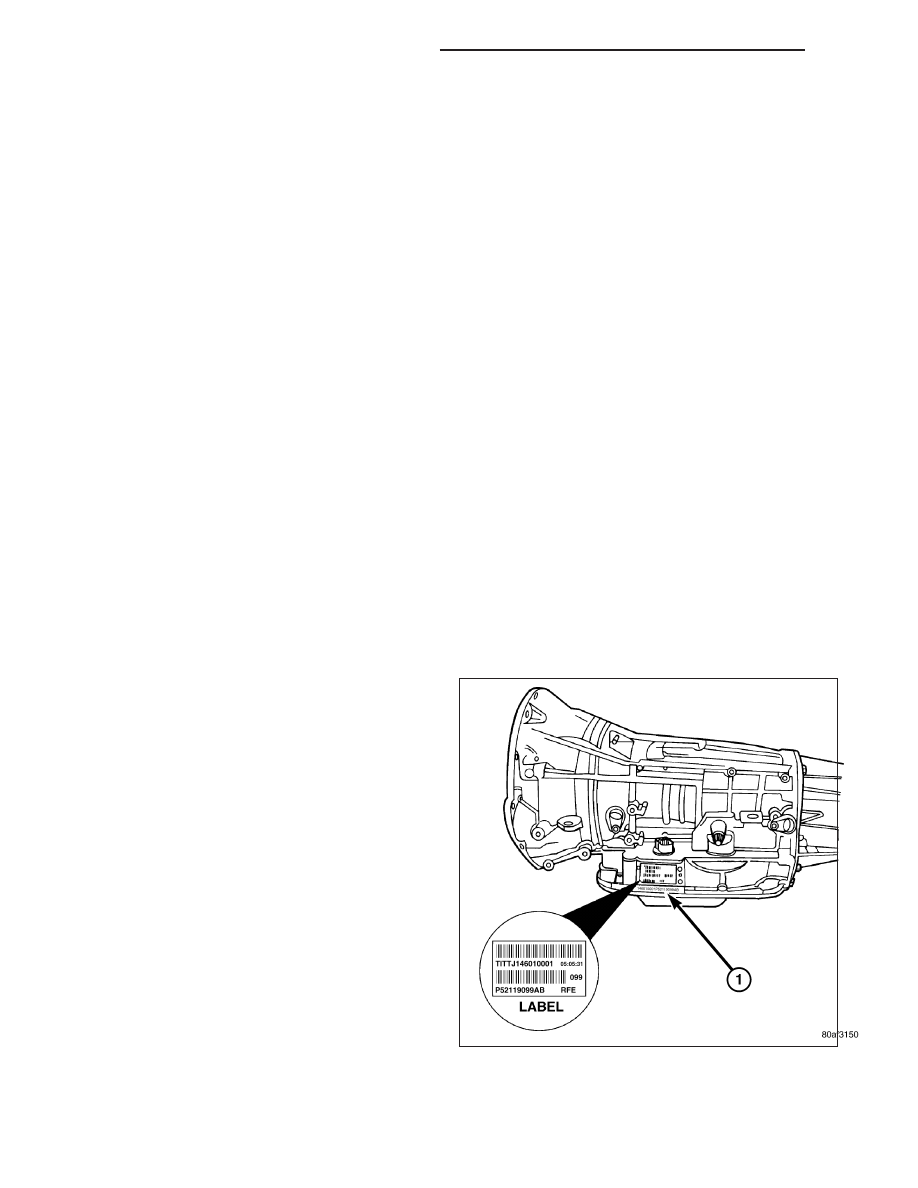Content .. 1182 1183 1184 1185 ..
Jeep Liberty KJ. Manual - part 1184

AUTOMATIC TRANSMISSION - 545RFE
DESCRIPTION
The 545RFE automatic transmission is a sophisticated, multi-range, electronically controlled transmission which
combines optimized gear ratios for responsive performance, state of the art efficiency features and low NVH. Other
features include driver adaptive shifting and three planetary gear sets to provide wide ratio capability with precise
ratio steps for optimum driveability. The three planetary gear sets also make available a unique alternate second
gear ratio. The primary 2nd gear ratio fits between 1st and 3rd gears for normal through-gear accelerations. The
alternate second gear ratio (2prime) allows smoother 4-2 kickdowns at high speeds to provide 2nd gear passing
performance over a wider highway cruising range. An additional overdrive ratio (0.67:1) is also provided for greater
fuel economy and less NVH at highway speeds.
The hydraulic portion of the transmission consists of the transmission fluid, fluid passages, hydraulic valves, and
various line pressure control components.
The primary mechanical components of the transmission consist of the following:
•
Three multiple disc input clutches
•
Three multiple disc holding clutches
•
Five hydraulic accumulators
•
Three planetary gear sets
•
Dual Stage Hydraulic oil pump
•
Valve body
•
Solenoid pack
The Transmission Control Module (TCM) is the “heart” or “brain” of the electronic control system and relies on infor-
mation from various direct and indirect inputs (sensors, switches, etc.) to determine driver demand and vehicle oper-
ating conditions. Depending on the vehicle configuration, the TCM may be a standalone module or it it may be
housed along with the Powertrain Control Module (PCM) in a single module. With this information, the TCM can
calculate and perform timely and quality shifts through various output or control devices (solenoid pack, transmission
control relay, etc.).
TRANSMISSION IDENTIFICATION
Transmission identification numbers (1) are stamped
on the left side of the case just above the oil pan seal-
ing surface. Refer to this information when ordering
replacement parts. A label is attached to the transmis-
sion case above the stamped numbers. The label
gives additional information which may also be neces-
sary for identification purposes.
GEAR RATIOS
The 545RFE gear ratios are:
21 - 680
AUTOMATIC TRANSMISSION - 545RFE
KJ